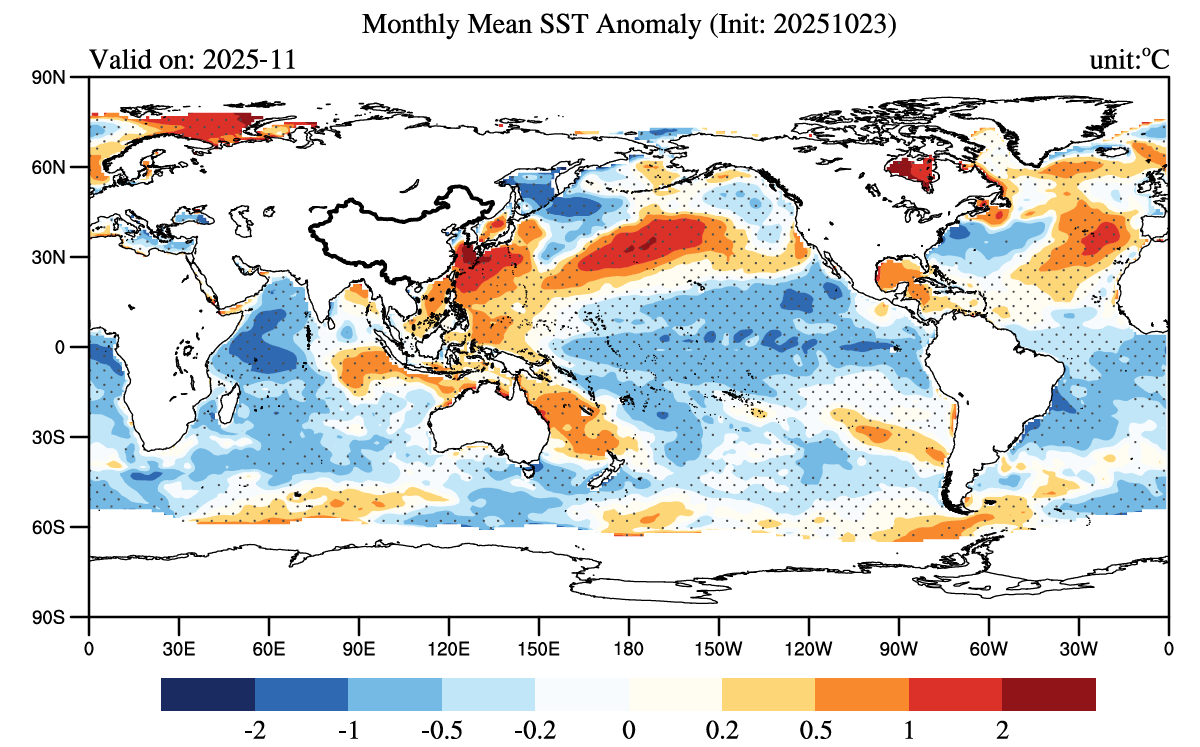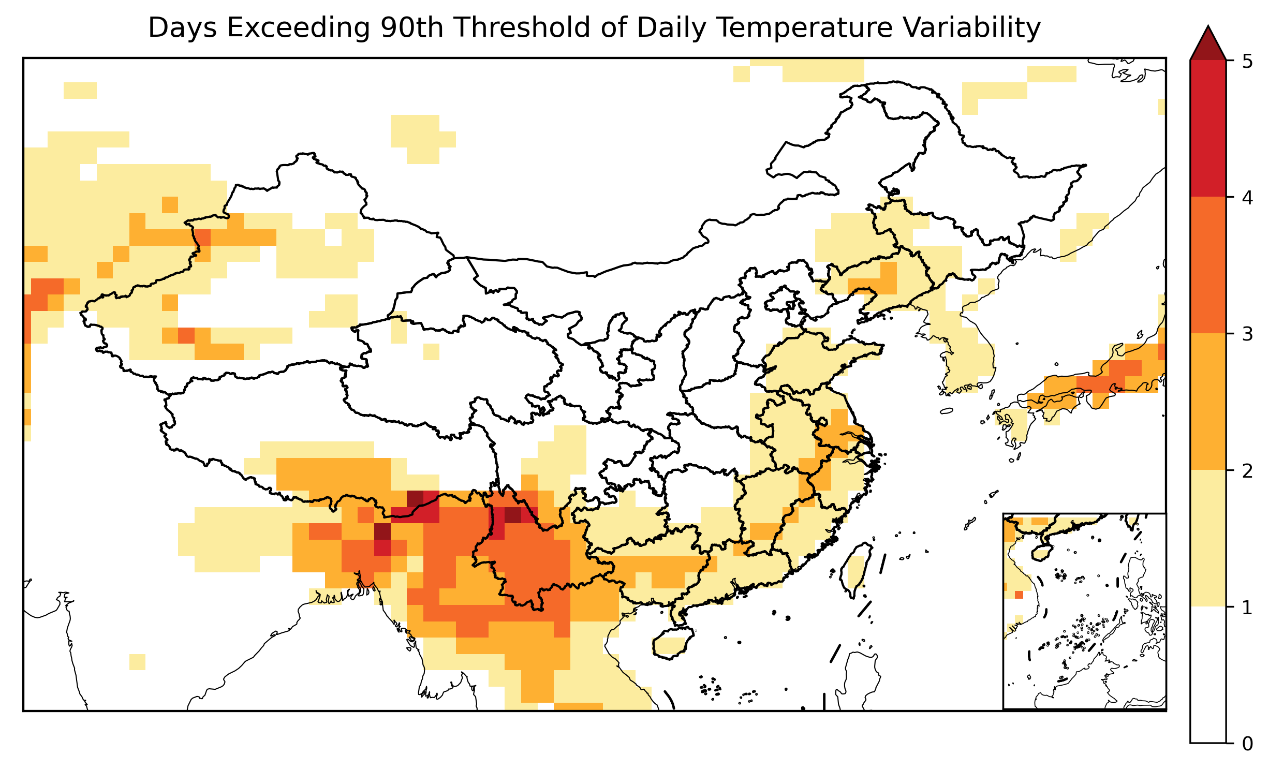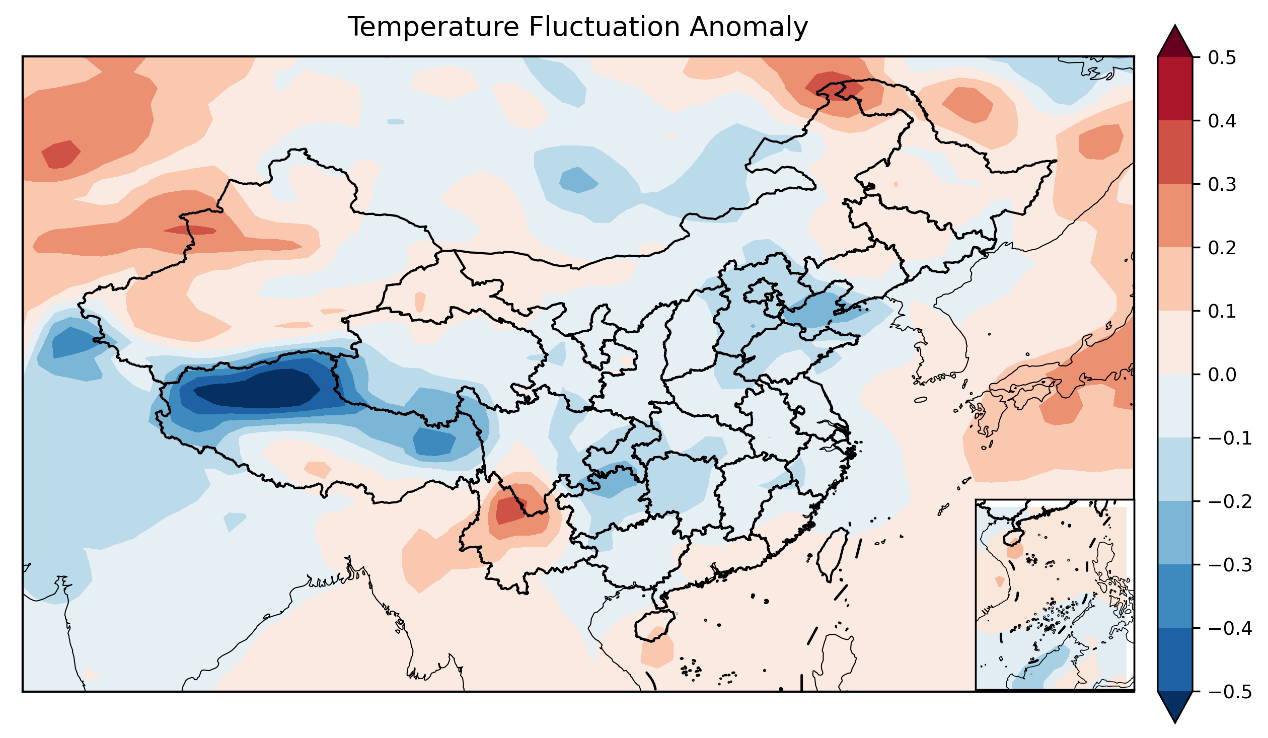It is projected that in November 2025, near-surface air temperature across China will exhibit a “warmer in the north and cooler in the south” spatial pattern. Among southern regions, South China (Guangdong, Guangxi, and Hainan province), Yunnan, Guizhou, and the southern part of the Tibetan Plateau are expected to experience the most notable below average temperatures, with anomalies reaching approximately 1 – 2 °C below the climatology. In contrast, northeastern China, eastern Inner Mongolia, and the northern Tibetan Plateau are projected to experience the most pronounced warming, exceeding +1 °C above average. On the global scale, La Niña conditions remain in place, with sea surface temperatures (SSTs) in the central to eastern equatorial Pacific about 0.5 – 1 °C below average, indicating a weak to moderate La Niña event. Meanwhile, a negative Indian Ocean Dipole (IOD) continues to develop, and mid latitude SSTs over the North Pacific—especially offshore of eastern China—remain warm anomalies. Under this background, cold air outbreaks are expected to continue moving southward, influencing large parts of China during November. In southern China, the interaction between cold and warm air will intensify, leading to frequent rapid temperature change, particularly over Yunnan Province. Compared with historical averages, the overall amplitude of day-to-day temperature variability across China is below average, while northeast China, Yunnan, and parts of Xinjiang may experience relatively stronger fluctuations.




Overall Assessment
In summary, China's temperatures in November 2025 are expected to feature a "warmer-north, cooler-south" pattern. Frequent temperature variations in the southern regions may affect energy supply and demand, transportation, public health, and the management of overwintering crops, thus requiring early preparedness and adaptation measures. Continuous monitoring of the La Niña and negative IOD events is recommended, as their subsequent evolution will provide important guidance for winter (December 2025 - February 2026) climate outlooks.
The present results are derived from the objective prediction methods developed by the SEPRESS team. The related products are scientific and technical outcomes, which can serve only as technical references for disaster prevention and mitigation, and should not be regarded as decision-making bases. It is recommended to further monitor subsequent forecasts issued by relevant official agencies.
note: Day-to-day temperature variability is defined as the difference between the daily temperature anomaly and that of the preceding day. The monthly amplitude of day-to-day temperature variability is represented by the monthly mean of the absolute values of these differences.
——————
The above monthly TC outlook is based on the SEPRESS Global Climate Seamless Prediction System. SEPRESS, or Seamless Prediction and Services for Sustainable Natural and Built Environments, is a global initiative led by the Hong Kong University of Science and Technology (HKUST) that translates scientific advancements in weather-to-climate (or, subseasonal-to-seasonal) prediction into practical, tailored solutions to enhance global climate resilience and sustainability. The initiative, endorsed by UNESCO, aims to bridge the gap between science and society by fostering partnerships and delivering actionable outcomes to support the UN’s Sustainable Development Goals. The SEPRESS team comprises hydrometeorologists and modelers from the HKUST, the Institute of Atmospheric Physics (Chinese Academy of Sciences), and Beijing Normal University.
Text and Figures contributed by: SONG Yurong, LI Shentong, ZHANG Shiyu